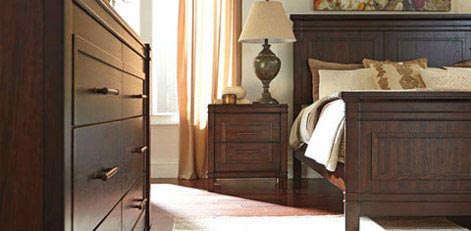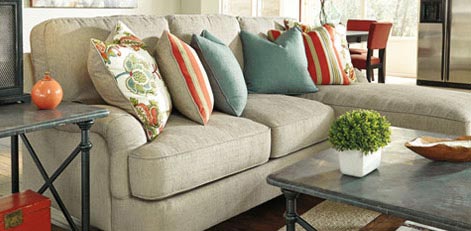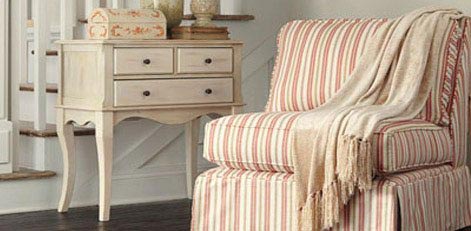Whether you're in a traditional office environment or working from home, your workspace's layout significantly impacts your productivity. Struggling to find your groove amidst cluttered desks, uncomfortable chairs, or poorly placed furniture can be a hindrance to your workflow.
Let’s explore how to arrange office furniture to optimize your workspace for comfort, functionality, and style. We'll provide insights into selecting the right desk, such as lift top desks or music studio desks, effectively using storage solutions, creating a visually balanced workspace, and even choosing furniture that supports sustainability. Get ready to transform your office space into a productivity haven!
Effective Office Furniture Arrangement
Creating an efficient and visually pleasing office space requires careful thought and planning. The arrangement of your office furniture, whether it’s traditional desks or modern work desks, plays a significant role in achieving this goal. Let's discuss some key strategies for creating a balanced workspace and maintaining a conducive traffic flow in your office.

 @fabianzelayahn
@fabianzelayahnIdentifying Your Needs
Before you can create an effective office layout, you need to identify your needs. This will involve:
List the type of work you do and the equipment and supplies required
Understanding the nature of your work is essential in designing an office layout. For instance, if you're a graphic designer, you might need a large desk for your computer and drawing equipment. On the other hand, if you're a writer, a comfortable chair and a quiet space might be your top priorities.
This will guide your furniture choices and layout decisions, whether you need black writing desks for focused writing tasks or desk furnitures for home for a more versatile setup.
Have a floor plan before physically moving items
Before physically moving items, create a floor plan. This helps you visualize the layout and make adjustments easily. Whether you're incorporating gold desks for a touch of elegance or charcoal desks for a more subdued look, a floor plan is essential.
Consider desk placement, first view, balance, and flow in your floor plan. These factors play a crucial role in your productivity and comfort. Desk placement, for instance, whether it’s a small office desk or an executive home office desk, should be in a location that minimizes distractions. The first view, or what you see when you enter the office, should be pleasing and inviting. Balance and flow refer to the arrangement of furniture and other items in a way that allows easy movement and creates a harmonious look.
Creating a Visually Balanced Workspace
One of the first steps in arranging your office furniture effectively is to create a visually balanced workspace. This involves:
Distribute visual weight evenly throughout the room
This means balancing larger, heavier pieces of furniture with smaller, lighter ones. For instance, if you have a large desk on one side of the room, consider placing a credenza desk or a couple of chairs on the other side to balance it out. This creates a sense of harmony and order in the space.
Don’t take up all the wall space
While it might be tempting to line every wall with furniture, like mirrored desks or brown desks, this can make the room feel crowded and claustrophobic. Instead, aim to leave some wall space clear. This not only gives the eye a place to rest but also allows for the inclusion of artwork or other decorative elements that can add personality to the space.
Keep the entryway clear
A clear entryway provides a better view of the entire space and creates a welcoming impression. It also facilitates movement into and out of the room. Make sure there are no pieces of furniture blocking the entrance or making it difficult to navigate around.
Maintaining a Conducive Traffic Flow
Another crucial aspect of office furniture arrangement is maintaining a conducive traffic flow. Here are some strategies to achieve this:
Avoid furniture arrangement that impedes movement
Make sure all pieces of furniture, like cherry office desks or farmhouse office desks, are placed in a way that allows for easy movement around the room. This might mean positioning your desk away from the door or arranging chairs in a way that they don't block the path to the window or the bathroom.
Ensure a minimum of a 3-foot wide walkway
A minimum of a 3-foot wide walkway is necessary to facilitate movement, especially in a busy office environment with small office desks with drawers. This also helps to make the room feel more spacious and less cluttered.
Place bookcases and filing cabinets close to the desk
Bookcases and filing cabinets should be placed close to the desk to keep walkways open. This not only improves traffic flow but also makes it easier to access files and books when needed.
By implementing these strategies, you can create a workspace that is not only visually appealing but also functional and conducive to productivity. Remember, the goal is to create a space that works for you and helps you to work more effectively.

 @myhomeinspo_
@myhomeinspo_Consulting with a Design Expert
A design expert has the knowledge and experience to create an office layout that meets your needs and preferences. They can also offer solutions to challenges you might encounter, such as limited space or poor lighting.
A well-designed office can boost productivity and promote well-being. A design expert can ensure that your office has adequate lighting, comfortable furniture, and a layout that encourages efficient workflow. They can also incorporate elements that enhance well-being, such as plants or artwork.
Arranging Office Furniture for Optimal Productivity
Arranging office furniture effectively is more than just an aesthetic choice; it's a strategic decision that can significantly impact your productivity and well-being. Ultimately, the goal is to create a space that looks good and also feels right and supports your work needs.
By thoughtfully arranging your office furniture, you can create an environment that fosters productivity and promotes your overall health and well-being.
This holistic approach ensures that your office is not just a place of work, but a space where creativity, efficiency, and comfort coexist harmoniously.









